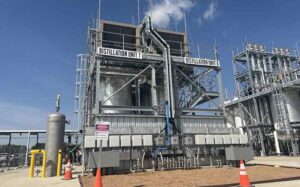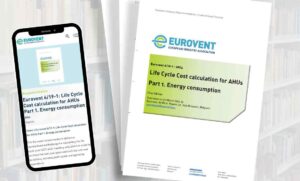Technology drives “naturals” uptake
9th July 2016 GERMANY: Although focused on the food and retail industry, further developments in “natural” refrigerant technology, such as low charge ammonia systems, could help drive their wider use.
GERMANY: Although focused on the food and retail industry, further developments in “natural” refrigerant technology, such as low charge ammonia systems, could help drive their wider use.
This was one of the messages coming out of the Eurammon symposium held in Schaffhausen, Switzerland, at the end of June.
In keeping with the motto “Path into a Green Future”, ten international lecturers showcased current trends and regulations in the refrigeration technology of the food and retail industry and presented future-oriented application examples. With nearly 70 participants from 13 countries, the Eurammon lecture event was fully booked again this year.
“With our focus on the food and retail industry, we caught the spirit of the times,” said Eurammon board member Mark Bulmer. “The use of natural refrigerants is gaining importance in this industry in particular – especially considering international regulations such as the F-gas regulation. But also the increasing awareness for sustainability among operators and consumers makes natural refrigerants more popular than ever before.”
Eurammon members Ákos Murin, of Hungarian contractor QPlan, and Anders Juul, Danfoss’ CO2 segment strategy manager, introduced innovations in the field of technologies and planning standards for CO2-based refrigeration systems. Both emphasised that in recent years the popularity of CO2 has risen significantly. This growth was positively influenced in particular by the increase in know-how in handling this refrigerant. The development of innovative components such as compressors used in parallel that facilitate an increase of the overall energy efficiency of systems with CO2 further supports this trend.
Stefan Jensen of Scantec Refrigeration, Australia, demonstrated that ammonia is still one of the most popular refrigeration solutions in the food and retail industry. The wide spectrum on available cooling capacity (from -50°C to +15°C) makes this refrigerant particularly suited for the high cooling demands of the food and retail industry. He maintained that switching from HFC systems to modern ammonia-based refrigeration system made economic sense due to its low operating costs and the higher initial investment was usually amortised after less than five years.
With the installation of a refrigerated warehouse in the hot desert city of Riyadh, Saudi Arabia, Miguel Garrido, Güntner’s sales director Western Europe, demonstrated not only the extreme capability of ammonia but underscored that an intelligent system design with easy accessibility minimises maintenance costs and facilitates the implementation of the highest security standards.
During a workshop, participants of the symposium discussed the future use of natural refrigerants in the food and retail industry. The experts assessed today’s barriers in the industry and the potentials of individual applications. Ongoing developments in technology, such as low charge ammonia systems, could help drive the wider use of natural refrigerants. The participants of the symposium clearly identified the key levers for a green future: “Planners and also operators need to increase their knowledge about the manifold application possibilities as well as their know-how regarding safe handling of natural refrigerants,” said Mark Bulmer.







